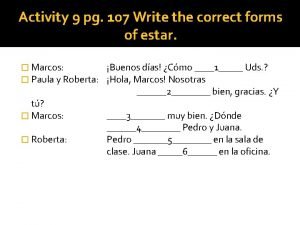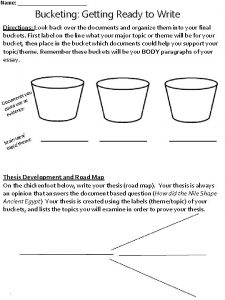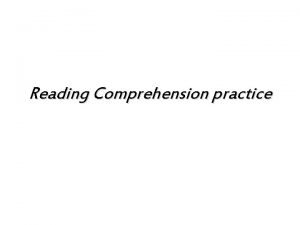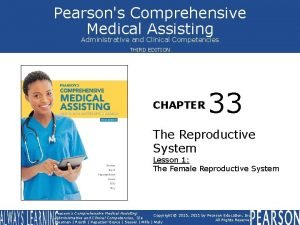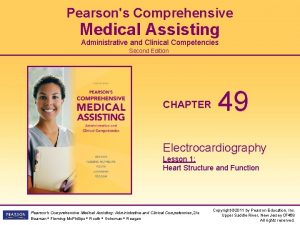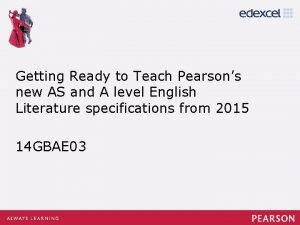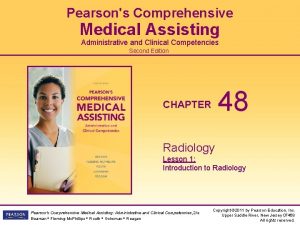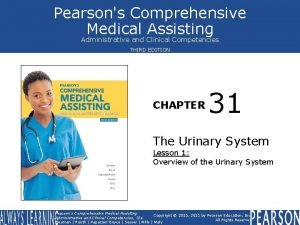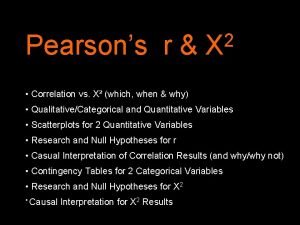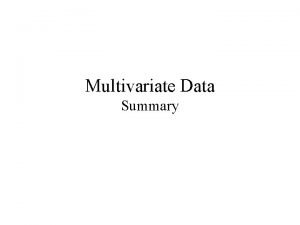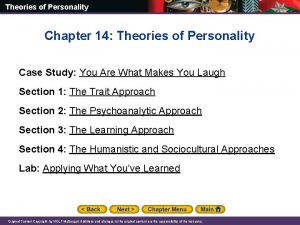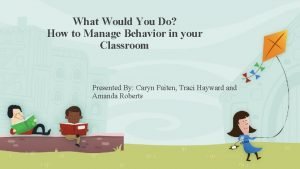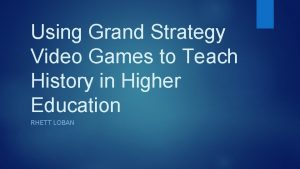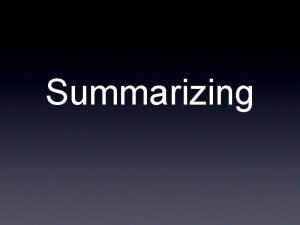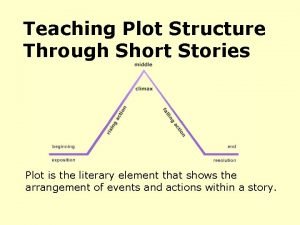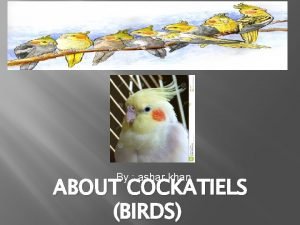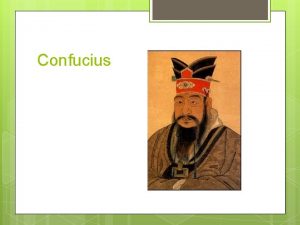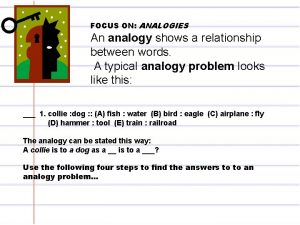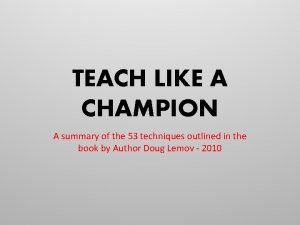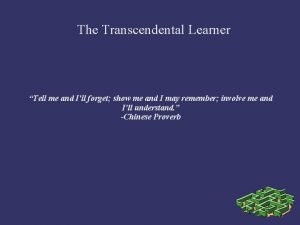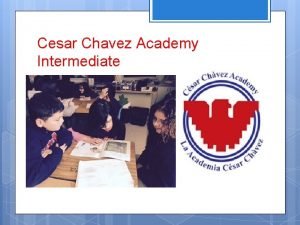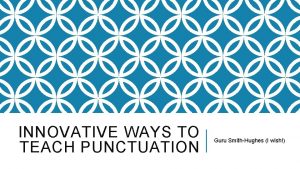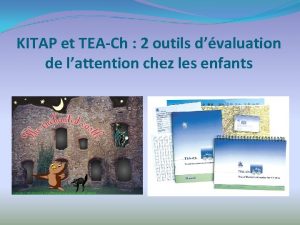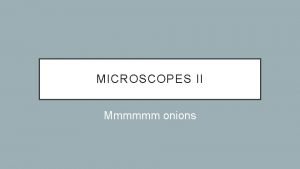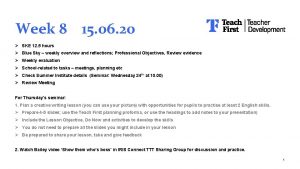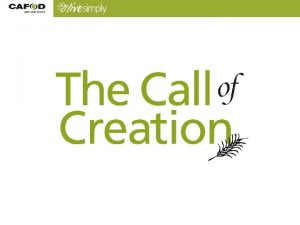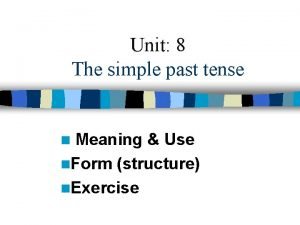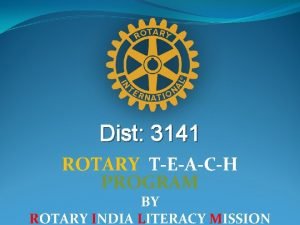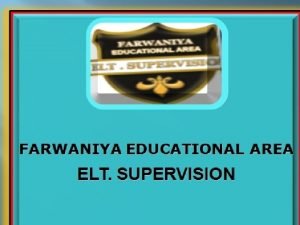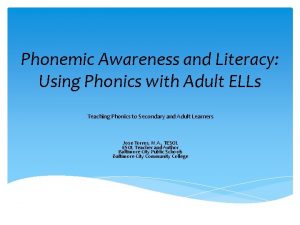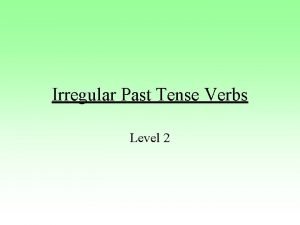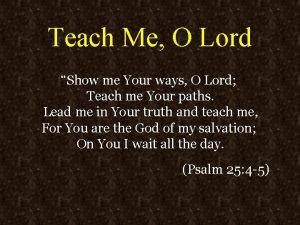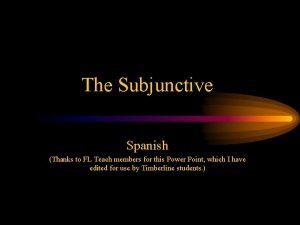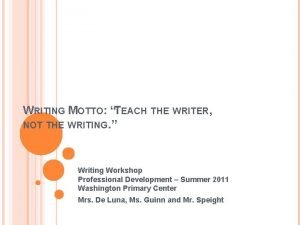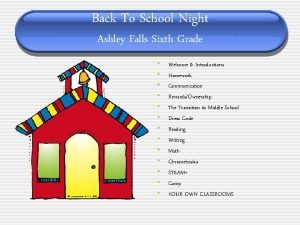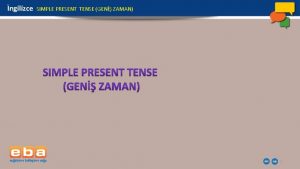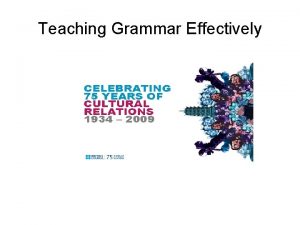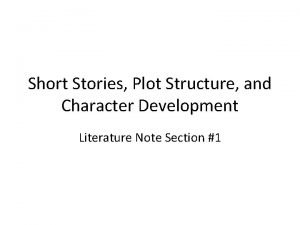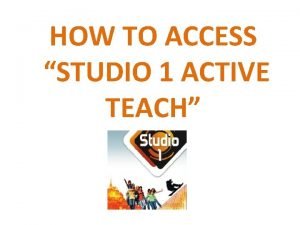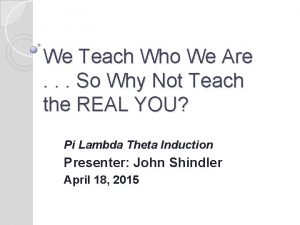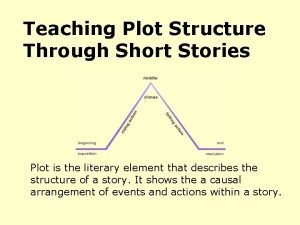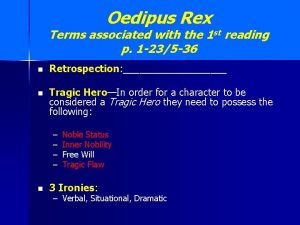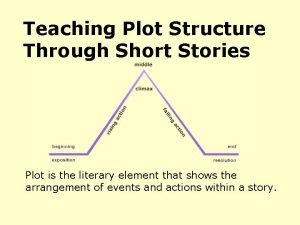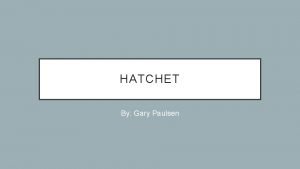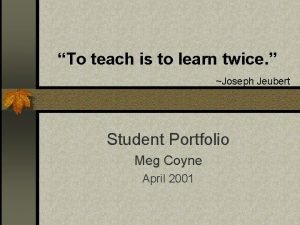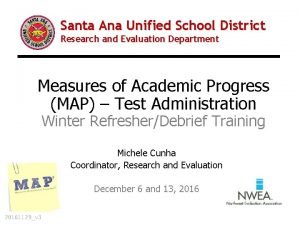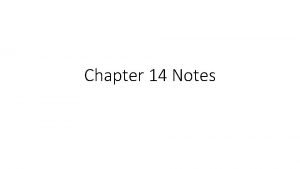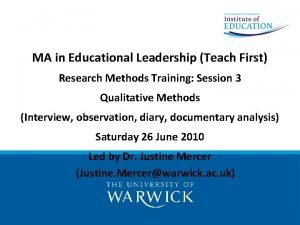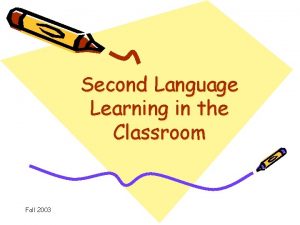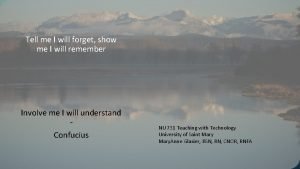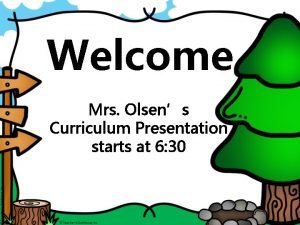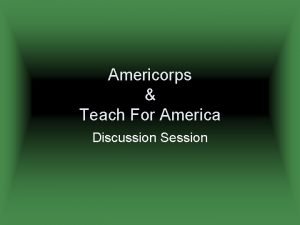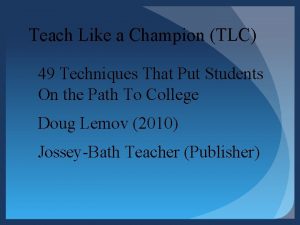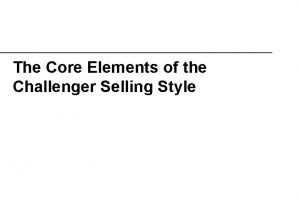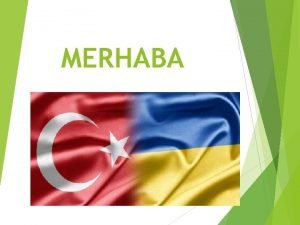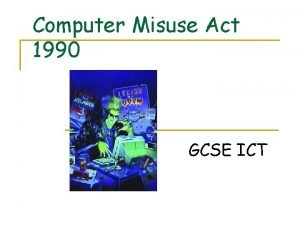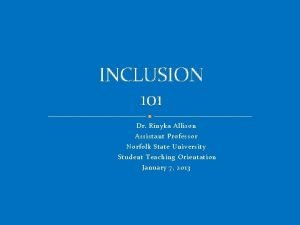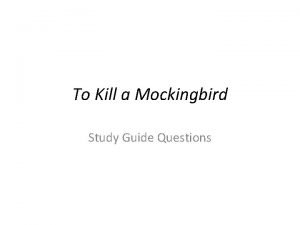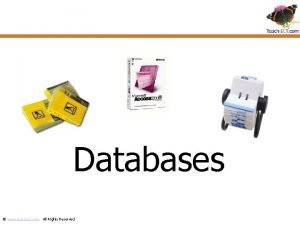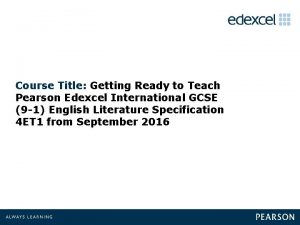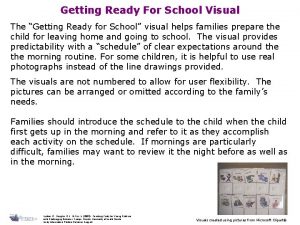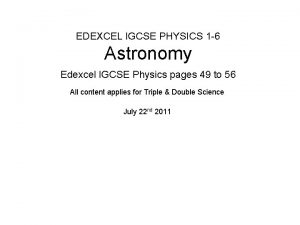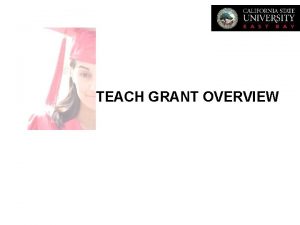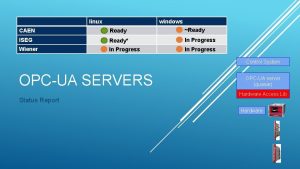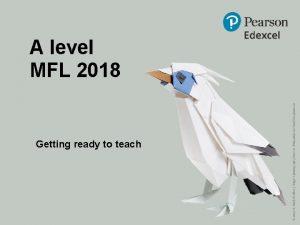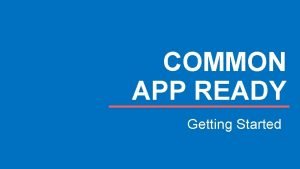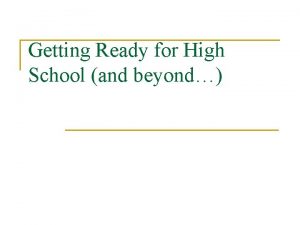Getting Ready to Teach Pearsons new Edexcel AS









































































































- Slides: 105


Getting Ready to Teach Pearson's new Edexcel AS and A levels in French 15 GBAL 03

Objectives • Gain an overview of the main changes for the new GCE course • Explore the question papers and mark schemes and take part in activities • Looking at teaching and learning strategies for integrating newer elements of the course • Find out more about the support available to guide you through these changes • Have the opportunity to network, discuss best practice and share ideas with other teachers

Agenda • A level reforms and new requirements for French • Overview of new specification content • Themes • Paper 1 AS and A levels: assessment content Teaching and learning activities • Paper 2 AS and A levels: assessment content Teaching and learning activities • Paper 3 AS and A levels: assessment content Teaching & learning activities • Support and resources

Languages for all • Content that engages, inspires and motivates your students • Manageable content and clear, structured assessment • Assessments that enable all students to reach their potential • Rich choice of popular and accessible works covering contemporary and classical titles from a range of directors and authors • Straightforward and clear mark schemes • Specification that builds transferable skills for progression to language or other degrees

AS & A level reforms • All new AS and A levels will be assessed at the same standard as they are currently • All new AS and A levels will be fully linear • AS levels will be stand-alone qualifications • The content of the AS level can be a sub-set of the A level content to allow co-teachability, but marks achieved in the AS will not count towards the A level

Key changes from 2016 • Renewed focus on Culture with a specific assessment objective (AO 4) to assess knowledge and understanding of the TL culture • Compulsory literature at A level and either a literary work or film at AS • Independent research project at A level assessed through the oral • Translations at AS and A level • Prescribed themes: - Social issues and trends - Political and/or Intellectual and/or Artistic culture

Teacher and internal research findings on assessment • Mark schemes to be precise and clear for learners, teachers and examiners • Tasks that encourage spontaneity and grammatical understanding • Ensure comparability across languages • Word counts in the writing papers should be recommended only

Our approach • All 4 skills assessed separately at AS and A level. • Cultural content which engages, inspires and motivates your students. • Rich choice of popular and accessible works covering contemporary and classical titles, linked to many of the topics and from a diverse range of directors and authors. • Choice of questions on literature & film in the writing paper. • Clear mark schemes that ensure differentiation across the ability ranges. • A specification that supports progression from GCSE and though to university.

Our design principles • Provide choice where possible in the Writing paper • Ensure contexts within Reading and Listening papers are set within the TL country/countries • Provide scaffolding for essays at AS • Mark schemes that encourage spontaneity

Our content principles • A mix of familiar and new themes to support a wide range of interests • Themes which relate directly to French and Frenchspeaking culture • Year 1 themes should facilitate progression from KS 4 • Themes that meet requirements of the subject criteria

Co-teachability • Year 1 A level content is the same as the AS content • Same ‘work’ can be studied for AS and for A level • 3 paper structure at AS and A level • All 4 skills assessed at AS and A level

Content –Year 1 A level/AS Theme 1: Les changements dans la société française Theme 2: La culture politique et artistique dans les pays francophones Les changements dans les structures familiales La musique L’éducation Les médias Les changements dans les attitudes envers le mariage, les couples et la famille Le système éducatif et les questions estudiantines Le monde du travail La vie active en France et les attitudes envers le travail; le droit à la grève; l’égalité des sexes Les changements et les développements; l’impact de la musique sur la culture populaire La liberté d’expression; la presse écrite et en ligne; l’impact sur la société et la politique Les festivals et les traditions Les festivals, fêtes, coutumes et traditions

Content – Year 2 (A level only) Theme 3: L’immigration et la société multiculturelle française Theme 4: L’Occupation et la Résistance L’impact positif de l’immigration sur la société française La France occupée Répondre aux défis de l’immigration et l’intégration Le régime de Vichy L’extrême droite La Résistance La collaboration; l’antisémitisme Les contributions des immigrés à l’économie et à la culture Les activités des communautés; la marginalisation et l’aliénation du point de vue des immigrés La montée du Front National; les leaders du Front National; l’opinion publique Maréchal Pétain et la Révolution nationale Jean Moulin, Charles de Gaulle et les femmes de la Résistance; la résistance des français

Assessment Objectives Weighting AO 1 Understand respond: 20% • in speech to spoken language including face-to-face interaction; • in writing to spoken language drawn from a variety of sources. AO 2 Understand respond: 30% • in speech to written language drawn from a variety of sources; • in writing to written language drawn from a variety of sources. AO 3 Manipulate the language accurately, in spoken and written forms, using a range of lexis and structure. 30% AS: Show knowledge and understanding of, and respond critically to, different aspects of the culture and society of countries/communities where the language is spoken. AO 4 A level: Show knowledge and understanding of, and respond critically and analytically to, different aspects of the culture and society of countries/communities where the language is spoken. 20%

Overview of new AS specification Assessment Objectives AO 1 % AO 2 % AO 3 % Paper 1: Listening, Reading and Translation into English 15 Total for AS % Total for all Assessment Objectives 40% 25 Paper 2: Written response to works, Translation into French Paper 3: Speaking AO 4 20 10 30% 5 5 10 10 30% 20 30 30 20 100%

Overview of new A level specification Assessment Objectives Paper 1: AO 1 % AO 2 % 15 25 AO 3 % AO 4 % Total for all Assessment Objectives 40% Listening, reading, translation into English Paper 2: 20 10 30% Written response to works, translation into French Paper 3: 5 5 10 10 30% 20 30 30 20 100% Speaking Total for A level

AS and A level Paper 1: Listening, Reading and Translation into English Df. E Criteria • Understand the main points, gist and detail from spoken and written material • Infer meaning from complex spoken and written material, including factual and abstract content • Assimilate and use information from spoken and written sources, including material from online media • Summarise information from spoken and written sources, reporting key points and subject matter in speech and writing • Read and respond to a variety of texts including some extended texts written for different purposes and audiences drawn from a range of authentic sources, including contemporary, historical and literary, fiction and non-fiction texts, adapted as necessary

AS level Paper 1 Listening, Reading and Translation into English Section Assessment 1 h 45 Section A: • 4 questions (MCQ and open responses in French) • including English language summary (4 marks) Listening comprehension and written summary (24 marks) Section B: Reading comprehension (28 marks) Section C: Translation into English (12 marks) • 5 questions: • MCQ and open response • All in French • 1 passage in French (minimum 70 words) to translate into English

A level Paper 1 Listening, Reading and Translation into English Paper Assessment 2 hours Section A: • 4 questions MCQ & open response in French Listening comprehension and written summary (30 marks) Section B: Reading comprehension (30 marks) Section C: Translation into English (20 marks) • Q 4 b assesses student’s ability to summarise in French • 5 questions: MCQ and open response All TL • 1 passage in French (minimum 100 words) to translate into English

Looking at the SAMs: • AS level Paper 1 • A level Paper 1

Summarising information At AS students will need to summarise information in English At A level students will need to summarise information in French Teachers teaching both AS and A level students in the same class can easily differentiate this task.

Summarising skills Students will need to: • listen to a larger amount of spoken language to get the information. • select the key information. • summarise it either in English or in the target language.

Summarising task

Discussion With the person next to you, think of strategies you could use to support your students with this task.

Step 1 Students need to analyse the questions. • How many marks? • Key words?

Step 2 • Listen and make notes. • Select the information according to your key words. • Is the information I am selecting relevant to my question/ key words? • Have I listened to the whole passage related to my question?

Discussion Co-teaching AS and A level How would you approach this activity with your AS and A level students?

AS level Paper 3 Speaking Df. E criteria • Use language spontaneously to initiate communication; ask and answer questions; express thoughts and feelings; present viewpoints; develop arguments; persuade; and analyse and evaluate in speech and writing, including interaction with speakers of the language • Apply knowledge of pronunciation, morphology and syntax, vocabulary and idiom to communicate accurately and coherently, using a range of expression – including the list of grammar at annex A for French • Use language learning skills and strategies, including communication strategies such as adjusting the message, circumlocution, self-correction and repair strategies

AS level Paper 3 Speaking Assessment Time: Marks: 27 -30 minutes including 15 minutes preparation time 72 Marks Task 1: • Stimulus card based on a sub-theme from Theme 1: Les changements dans la société française • 7 -9 minutes • 42 marks • Candidates respond to 4 compulsory questions on two short texts: Q 1 requires the candidate to summarise the first text. Q 2 is a comprehension question on the first text. Q 3 requires the candidate to respond to information in either the second text or both texts. Q 4 will stimulate wider discussion of the cultural & social context of the sub-theme beyond the focus of the texts on the stimulus card. The teacher/examiner (TE) must then ask follow-up questions which allow the candidate to demonstrate knowledge & understanding of the cultural and social context. The teacher/examiner can use the bank of optional generic questions provided by Pearson as a guide to ensure that the nature of the questioning allows the student to demonstrate their knowledge and understanding of the cultural and social context.

Looking at the SAMs: AS level Paper 3 • Task 1

AS level Paper 3 Speaking Assessment Time: 27 -30 minutes including 15 minutes preparation time Marks: 72 Marks Task 2: • 5 -6 minutes • 30 marks • The candidate is given a choice of 2 stimulus cards, following an order prescribed by Pearson, based on two sub-themes from the Theme La culture politique et artistique dans les pays francophones. • Each card contains one statement on the sub-theme which will act as a springboard for the discussion, which is in two parts. Part 1: The teacher/examiner (TE) asks the two compulsory questions on the card. The TE then helps to develop the discussion by asking appropriate follow up questions. Part 2: For the second half of the time allocated, the TE broadens the discussion by moving on to any other aspect(s) of the same sub-theme. The TE can use the bank of optional generic questions provided by Pearson as a guide to ensure that the nature of the questioning allows the student to demonstrate their knowledge and understanding of the cultural and social context.

Looking at the SAMs: AS level Paper 3 • Task 2

AS Speaking Assessment criteria Task 1 42 marks: Responding to written language in speech: Knowledge and understanding of society and culture: Accuracy and range of language: Interaction: Task 2 12 marks 6 marks 30 marks: Knowledge and understanding of society and culture: 12 marks Accuracy and range of language: 12 marks Interaction: 6 marks AO 4 AO 3 AO 1 AO 2 AO 4 AO 3 AO 1

A level Paper 3 Speaking Df. E criteria • Develop research skills in the language of study, demonstrating the ability to initiate and conduct individual research on a subject of personal interest, relating to the country or countries where the language is spoken • Identify a key question or subject of interest and select relevant information in the language of study from a range of authentic sources, including the internet • Use information to illustrate knowledge and understanding of the research subject • Analyse and summarise research findings, elaborating on key points of interest, as appropriate, through oral presentation and discussion

A level Paper 3 Speaking Assessment Time: Marks: 21 -23 minutes (including 5 minutes preparation time) 72 Marks total Task 1: • Candidates are provided with a choice of two stimulus cards on the day of assessment, on two different sub-themes, following a sequence outlined by Pearson. Candidates only see the card after the choice has been made. • Stimulus card contains 2 statements (A & B) offering different views on a sub-theme. • Spontaneous themebased discussion based on stimulus card • 30 marks • 5 minutes preparation • Candidates select 1 statement from the 2 given on the card. • 6 -7 minutes discussion • Candidates have 5 minutes’ supervised preparation time to consider the stimulus card & may make notes for this task. • Candidates tell the TE which statement they have chosen before the discussion begins.

A level Paper 3 Speaking Assessment Time: Marks: 21 -23 minutes (including 5 minutes preparation time) 72 Marks total Task 1 cont: • • Spontaneous themebased discussion based on stimulus card • 30 marks • 5 minutes preparation • 6 -7 minutes discussion There are two parts to the discussion: Part 1: The TE asks the 2 compulsory questions on the card. The candidate leads the discussion and the TE helps to develop the discussion by asking appropriate follow up questions. Part 2: The TE broadens the discussion to cover other aspects of the overall Theme. Generic questions provided by Pearson as a guide to the questions the TE should use to help the student to meet the requirements of the assessment criteria, i. e. to elicit examples and information to demonstrate their knowledge and understanding of the cultural and social context and to analyse aspects of the Theme by developing and justifying arguments and forming conclusions.

Looking at the SAMs: AL level Paper 3 • Task 1

A level Paper 3 Speaking Assessment Time: Marks: 21 -23 minutes (including 5 minutes preparation time) 72 Marks total Task 2 • Presentation and discussion on candidate’s independent research project (IRP) Candidates select a subject of interest to them related to the cultural and social context of French-speaking countries and communities • The IRP must not be based on the literary works or films studied for Paper 2 but may focus on a wider exploration of the author or film-maker • Candidates must initiate and conduct their own research and develop their research skills when investigating their subject of personal interest • 42 marks • • 10– 11 minutes discussion (including 2 • minutes presentation) More than one candidate in a centre may research a particular topic. Teachers & candidates sign to confirm IRP has been carried out independently. • • Candidates must refer to at least 2 written sources in their presentation. Sources must be written in French e. g. newspaper & magazine articles, journals, literary texts. Candidates may refer to other authentic sources used in their research during the discussion e. g. films, television, radio.

A level Paper 3 Speaking Task 2 cont. The Independent Research Project must: • be based on a question or statement defined and developed by the student individually to investigate a particular area of interest specifically related to the culture and/or society of one of the target language countries or communities. • include evidence of the student’s research findings, investigated independently, from a range of authentic sources including the internet • enable the student independently to contextualise, analyse and summarise findings • enable the student to identify at least two written sources which they can summarise and give a personal response to in their presentation. Additional guidance on the teacher’s role is provided in the specification.

A level Paper 3 Speaking Task 2 cont. Two parts to this discussion: Part 1: Candidate gives a presentation & provides a summary of at least 2 written sources used in research, outlining authors’ main points/ideas and giving a personal response to what s/he has read. Presentation must not exceed two minutes. Candidates assessed on ability to respond in speech to written sources. Part 2: Discussion broadened out to a wider exploration of content of candidate’s presentation and of their research as a whole. TE uses key findings & list of sources on RP 3 Form to ask questions which enable candidates to • give examples & information to demonstrate their knowledge & understanding of the cultural and social context • analyse aspects of the Theme by developing and justifying arguments • form conclusions. Generic questions are provided by Pearson as a guide

A level Paper 3 Speaking Assessment Time: Marks: 21 -23 minutes (including 5 minutes preparation time) 72 Marks total Tasks 1 and 2 In both Tasks 1 and 2 , candidates are expected to • ask questions which elicit opinions as part of the natural discourse • confirm their own points of view have been understood • take lead in the discussions.

A level Speaking Assessment criteria Task 1 Knowledge and understanding of society and culture: Accuracy and range of language: Interaction: Task 2 Part 1 Responding to written language in speech: Part 2 Knowledge and understanding of society and culture: Accuracy and range of language: Interaction: 12 marks AO 4 12 marks AO 3 6 marks AO 1 12 marks AO 2 12 marks AO 4 12 marks AO 3 6 marks AO 1

Speaking and the Independent Research Project

Discussion What activities and strategies do you use to encourage your students to express their points of view?

Examples of activities 1 - Discussion cards 2 - The Bigger Picture 3 - A two-idea answer

Activity 1 Discussion cards

The Bigger Picture

Activity 2 Using the bigger picture, discuss the following theme.

Activity 3 Using the two-idea answer technique, answer the following questions.

The Independent Research Project Research Skills with the ‘bigger picture’

Some key considerations: • When to start preparing the students on the skills? • How much independence/ guidance to give them? • How to develop research skills? • How to organise the notes? • How to practise their notes? • Time in lessons to practise their knowledge and skills?

Discussion What are the key strategies/ techniques that will have an impact on your teaching? How are you feeling now about teaching the Speaking Component? What do you need to do to prepare yourself and your students?

Support materials for Paper 3 Speaking • Ideas for independent research projects • How to develop research skills http: //qualifications. pearson. com/en/qualifications/edexcel-a-levels/french 2016. coursematerials. html#filter. Query=Pearson-UK: Category%2 FTeaching-andlearning-materials

AS level Paper 2: Written response to works and Translation into French Df. E Criteria • Know, understand be able to respond critically in writing, in the language of study, to the work, taken from the prescribed list provided in the specification. • At AS, knowledge and understanding of the work must include a critical response to aspects such as the structure of the plot, characterisation, and use of imagery or other stylistic features, as appropriate to the work studied • Candidates can choose either a literary work or film

Literary Works and Films Selection criteria • Wide selection of works featuring both classical and contemporary titles • Variety of literary styles including- novels, plays and short stories • Works that could be co-taught • Works that link with themes • Works which have some existing teaching and learning support

AS level Paper 2 Written response to works and translation into French Paper 2 Assessment 1 h 40 Section A: Translation into French (20 marks) • 1 passage in English (minimum 70 words) to translate into French Section B: Written response to works (40 marks) • 1 essay in French linked to a chosen work (text or film) • Choice of 2 questions for each work • Word count between 275 -300

Looking at the SAMs: • AS level Paper 2

AS level Paper 2 Assessment Criteria Section A Translation into TL: 20 marks Section B or C: 40 marks 1 Essay: • Critical response: 20 marks (AO 4) • Accuracy and range of grammatical structures and vocabulary: 20 marks (AO 3)

A level Paper 2: Written response to works and Translation into French Df. E Criteria • At A level, specifications must require students to study two works, either a literary work and a film, or two literary works, in the language of study. • Appreciate, analyse and be able to respond critically in writing, in the language of study, to the works, taken from the prescribed list provided in the specification. • At A level, students must develop a more detailed understanding of the works, showing a critical appreciation of the concepts & issues covered, and a critical & analytical response to features such as the form and the technique of presentation, as appropriate to the work studied (e. g. the effect of narrative voice in a prose text or camera work in a film). • Students are required to study two discrete works at A level i. e. students cannot be assessed on a film adapted from a literary work as well as on the original literary work itself.

A level Paper 2 Written response to works and translation into French Paper 2 Assessment 2 h 40 Section A: • 1 passage in English (minimum 100 words) to translate into French Translation into French 20 marks Sections B and C: Written response to works 100 marks – 50 marks for each essay • Essay 1: Extended response to a question on a film or a literary work • Essay 2: Extended response to a question on a film or a literary work • Choice of 2 questions for each work • Recommended word count between 300 -350 for each response • Candidates must respond to at least one literary work at A level

Looking at the SAMs: • A level Paper 2

A level Paper 2 Assessment Criteria Section A Translation into TL: 20 marks Sections B and C: 100 marks 2 essays, each marked on: • • Critical and analytical response: Range of grammatical structures and vocabulary: Accuracy of language: 20 marks (AO 4) 20 marks (AO 3) 10 marks (AO 3)

Introduction to teaching Film and Literature We will look at: 1. Planning considerations 2. Practical activities

Discussion What are your main hopes and concerns about this aspect of the course for you and your students?

Course Planning considerations • Stage 1 - Introduction to film/literary study • Stage 2 - Introduction to the work to author/ director/historical background/other works. • Stage 3 - Overview of the book - plot/characters/ themes/style/settings… • Stage 4 - Detailed and focused analysis of: Themes Characters Style Settings Main/pivotal scenes/passages • Stage 5 - Exam questions - this could be carried out alongside the analysis

Introduction to the work Author/ director Contrasting works Other works from the author/ director Historical background Book or film Genre/ artistic movement Reviews / critique

Some planning considerations for teachers • Research what is specific to the work you have chosen/the author/director? • Have a list of the main ‘quotes’/‘images’ per theme • Have a list of the main ‘quotes’ per character • Identify the main scenes/extracts • Prepare a grid with the elements of your work and refer to it as you are planning • Build up a bank of exam questions

Some key planning considerations • Pre-study work (summer holiday? ) • Start of the first work? The second work? • Support needed – list of technical terms/phrases to use…/learning mat? • Analysis expectations from the start • Essay writing skills - ‘little and often approach’ • Language barrier • Note keeping and topping up - booklet to record all the notes and activities together and will allow for ‘topping-up’ throughout the course. (Overview - useful language – quotes – characters – setting - insert extracts - shots from the film… analysis - exam questions) • Any others?

Example of a learning mat to provide support opinions expressing the importance of something expressing a reason expressing evidence adding information contrasting conclusions other useful words what the work shows

Discussion Chronological study or focused (by themes/ characters…) study of the work? What are the advantages and drawbacks of both approaches?

Main areas of study and analysis Film Literature Characters Themes Social and cultural settings Narrative style Film techniques Visual and audio Literary techniques Syntax and language

Activity 1 Watch the following trailer and identify some areas from your ‘How to analyse a text or a film’ document that could be exploited. Students could be divided into groups and focus on different elements.

Analysis and practical activities Students will have to analyse and must avoid re-telling the story. They will need to use their references to the work effectively.

The PEE technique Point What is my point in relation to the question? Evidence What I can see/ read Explanation What can I say/ deduce/ explain from the above?

“O. K, ” said George. “an’ you ain’t gonna do no bad things like you done in Weed, neither. “ Lennie looked puzzled. “Like I done in Weed? ” “Oh, so ya forgot that too, did ya? ” ― John Steinbeck, Of Mice and Men

The use of language Point What is my point in relation to the question? Steinbeck uses ………. - a colloquial language - slang - language as it sounds/ phonetic language Evidence What I can see/ read…. ‘ain’t gonna ‘ ‘like you done’ ‘Like I done’ Explanation What can I say/ deduce/ explain from the above? • This gives us a sense of who the people are • We understand the people better • We understand their social background • ……… What can I say about the language used if I am using the following examples? What are my examples? What is this telling me about the characters?

Activity 2 • Watch the following clip and, referring to the ‘character’ section, what would you be able to say about the characters? Why? • Use the PEE technique to express your ideas. Here we could concentrate on how the characters are portrayed.

Character 1 Physical description Personality Actions Their relationship with other characters? Their similarities with other characters? Their differences with other characters? Anything perceptive to say? P. E. E.

Using De Bono’s PMI Plus- what is positive about our character Minus- what is negative about our character? Interesting- what is interesting about them?

Activity 3 De Bono’s PMI and the setting. Watch the following clip and write down your PMI for the setting.

Language Before studying a passage from a book, think of ways the vocabulary can be introduced before the activities. What activities can we use to enable access ?

Let’s consider using quotes as a starting point for our analysis. • What words do you think could be a barrier to comprehension? • Think of ways the vocabulary could be introduced before the analysis of the quotes.

C'était un vrai concours de ballons cette cité, c'est pas de l'habitat, c'est de l'élevage. Je n'avais pas d'amies à l'école, je n'aime pas les filles elles sont con. Les Petits enfants du siècle, C. Rocheford

Discussion What aspects of the work can we analyse with these quotes? What activities can we use with our students?

The literary techniques and the use of language Analysez le style dans …. What aspects of the style can we discuss with these quotes?

Humour? C'était un vrai concours de ballons cette cité, c'est pas de l'habitat, c'est de l'élevage. Je n'avais pas d'amies à l'école, je n'aime pas les filles elles sont con. Grammatical errors/ syntaxe relâchée First person Similes/ images Colloquial language Les Petits enfants du siècle, C. Rocheford

The PEE technique • Students would be able to write 4 PEE paragraphs from these quotes in relation to the style. 1 - First person [PEE] 2 - Colloquial / Grammar [PEE] 3 - Similes [PEE] 4 - Humour [PEE] • Other aspects could be looked at through other quotes or extracts • Further examples of the same ‘style’ to be explored with other extracts

Cinematographic techniques

Activity 4 Watch this clip. Work in pairs. Person A will concentrate on the actions - what is going on Person B will concentrate on the filming techniques (camera work- sound- position of characters- lighting- music- colours- movement) • Write something in each box. NB: Before this type of activity it would be necessary to spend some time on explaining film techniques by showing different examples throughout the work • •

Activity 4 • Now tear off each box. • Watch the clip again. • Match one action box with one technique box as you are watching the clip. Questions 1 - Why did the director use that technique? 2 - What is the impact on the viewer? Express your ideas with the PEE technique. 3 - Are the techniques effective? Why not?

Reflection time What are the key strategies/ techniques that will have an impact on your teaching? How are you feeling now about teaching film and literature? What do you need to do to prepare yourself and your students?

Support materials for Paper 2 • French essay writing support (Terminology document for literature and films) • How to analyse a text or a film • AS and AL French: Approaches to teaching literature • Presentations on literary works and films http: //qualifications. pearson. com/en/qualifications/edexcel-a-levels/french 2016. coursematerials. html#filter. Query=Pearson-UK: Category%2 FTeaching-and-learningmaterials

Supporting you Develop Free support: • Getting Ready to Teach events Paid-for support: • Delivering the new A level specification Plan Teach Develop Track & Assess Free support: • Specimen papers • Student exemplars • Video on conducting the speaking assessment • Results. Plus Track & Assess These resources have not yet been endorsed. *You do not have to purchase any resources to deliver our qualifications. Plan Free support: • Course planner • Schemes of Work • Getting Started Guide • Mapping charts • Student guides Teach Free support: • Guides on approaches to teaching film & literature • Essay writing support • How to develop research skills • How to analyse a text or a film • List of useful websites • Ideas for independent research projects Other published resources*: • Edexcel A level French (includes AS) Student Book and Digital resources

Planning support Free support: Plan Teach Develop Track & Assess • • • Course planner Schemes of Work Getting Started Guide Mapping charts Student guides

Teaching support Plan Teach Develop Track & Assess Free support: • Guides on approaches to teaching film & literature • Essay writing support (including presentations on literary works and films) • How to develop research skills • How to analyse a text or a film • List of useful websites • Ideas for independent research projects Other published resources*: • Edexcel A level French (includes AS) Student Book and Digital resources These resources have not yet been endorsed. *You do not have to purchase any resources to deliver our qualifications.

Tracking and assessment support Plan Teach Develop Assess Free support: • Specimen papers • Student exemplars • Video on conducting the speaking assessment • Results. Plus

Results. Plus • Results. Plus provides the most detailed analysis available of your students’ exam performance. This free online service helps you identify topics and skills where students could benefit from further learning, helping them gain a deeper understanding of languages.

Supporting you Free support: Plan • Getting Ready to Teach events Paid-for support: Teach Develop Track & Assess • Delivering the new A level specification We are planning Professional Development events to support first teaching and beyond, in response to your feedback.

Published resources We are committed to helping teachers deliver our Edexcel qualifications and students to achieve their full potential. To do this, we aim for our qualifications to be supported by a wide range of high-quality resources, produced by a range of publishers. However, it is not necessary to purchase endorsed resources to deliver our qualifications.

Other published resources Hodder - A level MFL We are working towards gaining endorsement of new textbooks that match the French, German and Spanish Edexcel A level specifications from 2016. Zig. Zag - A level MFL Photocopiable resources for French, German & Spanish – learning, revision & exam practice! *These resources have not yet been endorsed. This information is correct as of 8 th July 2015, but may be subject to change. *You do not have to purchase any resources to deliver our qualifications.

Contact details Alistair Drewery, Subject Advisor Phone: UK: 0844 576 0035 Intl: +44 (0) 207 010 2187 Email: Teaching. Languages@pearson. com Twitter: @Pearson. MFLquals Sign up today to receive Subject Advisor emails

Pearson is recruiting • Pearson is recruiting for GCSE and GCE MFL • We have exciting opportunities to become an examiner for Languages: o get closer to the qualification you are teaching o gain insight on National Standards o grow your career o apply via the Pearson website

Next steps • Please complete your evaluation form for today’s event – in your pack • Sign up to our updates: email - Teaching. Languages@pearson. com • Visit the website to download further copies of the specification and support materials: http: //qualifications. pearson. com/en/qualification s/edexcel-a-levels/modern-languages-2016. html

References to third party material made in this publication are made in good faith. Pearson does not endorse, approve or accept responsibility for the content of materials, which may be subject to change, or any opinions expressed therein. (Material may include textbooks, journals, magazines and other publications and websites). With thanks for Karine Harrington for providing the teaching and learning materials for this session.
 Stay ready to keep from getting ready
Stay ready to keep from getting ready The secret to getting ahead is getting started
The secret to getting ahead is getting started Getting ready to cook
Getting ready to cook The verb estar page 107 answers
The verb estar page 107 answers Ready cook safety
Ready cook safety Bucketing - getting ready to write
Bucketing - getting ready to write Chatbot adult
Chatbot adult I was getting ready for sam's birthday
I was getting ready for sam's birthday Getting ready for the real world answers
Getting ready for the real world answers Pearsons
Pearsons Pearsons
Pearsons Pearsons exam wizard
Pearsons exam wizard Pearson comprehensive medical assisting
Pearson comprehensive medical assisting Pearsons
Pearsons Pearsons r
Pearsons r Pearsons
Pearsons Ready for a new challenge
Ready for a new challenge What is think aloud strategy
What is think aloud strategy Studiendekanat uni bonn
Studiendekanat uni bonn Chapter 14 theories of personality
Chapter 14 theories of personality Https://teach.classdojo.com/#/launchpad
Https://teach.classdojo.com/#/launchpad Metodo teach back
Metodo teach back Video games that teach history
Video games that teach history Kung fu punctuation speech marks
Kung fu punctuation speech marks Summarizing is a powerful reading strategy. it increases
Summarizing is a powerful reading strategy. it increases What is the plot of a story
What is the plot of a story Why do cockatiels have mohawks
Why do cockatiels have mohawks Confucius values
Confucius values How does god teach us
How does god teach us Lord teach us to number our days
Lord teach us to number our days Pe share learn teach
Pe share learn teach Part to whole examples
Part to whole examples Teach like a champion summary
Teach like a champion summary Teach me and i'll forget
Teach me and i'll forget Cesar chavez academy upper elementary
Cesar chavez academy upper elementary Teach and train fccla
Teach and train fccla No opt out
No opt out How to teach kung fu punctuation
How to teach kung fu punctuation Suicide chain teach
Suicide chain teach Teach acronym nursing
Teach acronym nursing Teachlousiana
Teachlousiana Intel teach to the future
Intel teach to the future Kitap test
Kitap test Https://teach.classdojo.com
Https://teach.classdojo.com Analysis words
Analysis words The choices we make today affect tomorrow
The choices we make today affect tomorrow Rotary teach program
Rotary teach program Chapter 10 their eyes are watching god
Chapter 10 their eyes are watching god If i could only teach you one thing why god made you
If i could only teach you one thing why god made you Etetp
Etetp Simple past meaning
Simple past meaning See one do one teach one
See one do one teach one How to teach hcf and lcm
How to teach hcf and lcm Rotary teach program
Rotary teach program Micro teach
Micro teach Teach me some melodious sonnet
Teach me some melodious sonnet How to teach phonics to adults
How to teach phonics to adults Englishpage irregular verbs
Englishpage irregular verbs Show me your way
Show me your way Teach learning dimensions
Teach learning dimensions Weirdo subjunctive spanish examples
Weirdo subjunctive spanish examples Teach the writer not the writing
Teach the writer not the writing Https://teach.classdojo.com
Https://teach.classdojo.com Present simple slide
Present simple slide Ezekiel 44:23
Ezekiel 44:23 Why did jesus teach in parables lds
Why did jesus teach in parables lds Grammar feedback examples
Grammar feedback examples Plot structure in literature
Plot structure in literature Studio active teach
Studio active teach Intel teach elements
Intel teach elements Micro teach lesson plans
Micro teach lesson plans We teach who we are
We teach who we are Plot of a story
Plot of a story Climax of oedipus rex
Climax of oedipus rex Plot in a story
Plot in a story Brian showed ingenuity in this chapter. cite examples.
Brian showed ingenuity in this chapter. cite examples. To teach is to learn twice over
To teach is to learn twice over I can easier teach twenty
I can easier teach twenty Www.teach.mapnwea.org
Www.teach.mapnwea.org Teach them diligently nashville
Teach them diligently nashville Bloody instructions macbeth
Bloody instructions macbeth Data protection act teach ict
Data protection act teach ict What does the psychoanalytic approach to personality teach?
What does the psychoanalytic approach to personality teach? Teach first documentary
Teach first documentary Intel teach programme
Intel teach programme Teach what is teachable proposal
Teach what is teachable proposal Module 8 chemistry
Module 8 chemistry Tell me i will forget show me i will remember
Tell me i will forget show me i will remember Https://teach.classdojo.com
Https://teach.classdojo.com Teach for america charleston sc
Teach for america charleston sc Blockälteste
Blockälteste Intel corporation
Intel corporation So teach my song to rise to you
So teach my song to rise to you Teach like a champion book summary
Teach like a champion book summary Challenger teach tailor take control
Challenger teach tailor take control Dt ukraine
Dt ukraine Teach ict computer misuse act
Teach ict computer misuse act How to teach tenths and hundredths
How to teach tenths and hundredths One teach, one assist pros and cons
One teach, one assist pros and cons Teach minulý čas
Teach minulý čas Teaching grammar for young learners
Teaching grammar for young learners How to teach english to arabic speakers
How to teach english to arabic speakers Study guide questions to kill a mockingbird
Study guide questions to kill a mockingbird Teachict
Teachict Introduction of opinion essay
Introduction of opinion essay One price policy
One price policy



